For years, scientists debated whether animals experience emotions at all. It is widely accepted amongst ethologists that animals with a centralised nervous system are sentient beings and can perceive an environment and think through reactions.
The UK’s Government published in May 2021 a policy: Action Plan for Animal Welfare sets out government plans, aims and ambitions across animal welfare.
This Action Plan for Animal Welfare sets out the Governments plans, aims and ambitions across 5 key areas:
- sentience and enforcement
- international trade and advocacy
- farm animals
- pets and sporting animals
- wild animals
I am proud to say that the UK has a long history of improving the lives of animals, being the first country in the world to pass legislation to protect animals in 1822 with the Cruel Treatment of Cattle Act and later the landmark Protection of Animals Act in 1911.
In May 2021, the UK also introduced the Animal Welfare (Sentience) Bill to formally recognise animals as sentient beings in domestic law, which was a significant step forward in protecting animals from abuse. You can keep up to date with the live progress here.
I have always believed animals have emotions because I can see it! It has never even crossed my mind that animals don’t feel the same or have similar sentiments to what humans have. In fact, I am certain that not only do they have emotions, but they also have many different neurological challenges as we do.
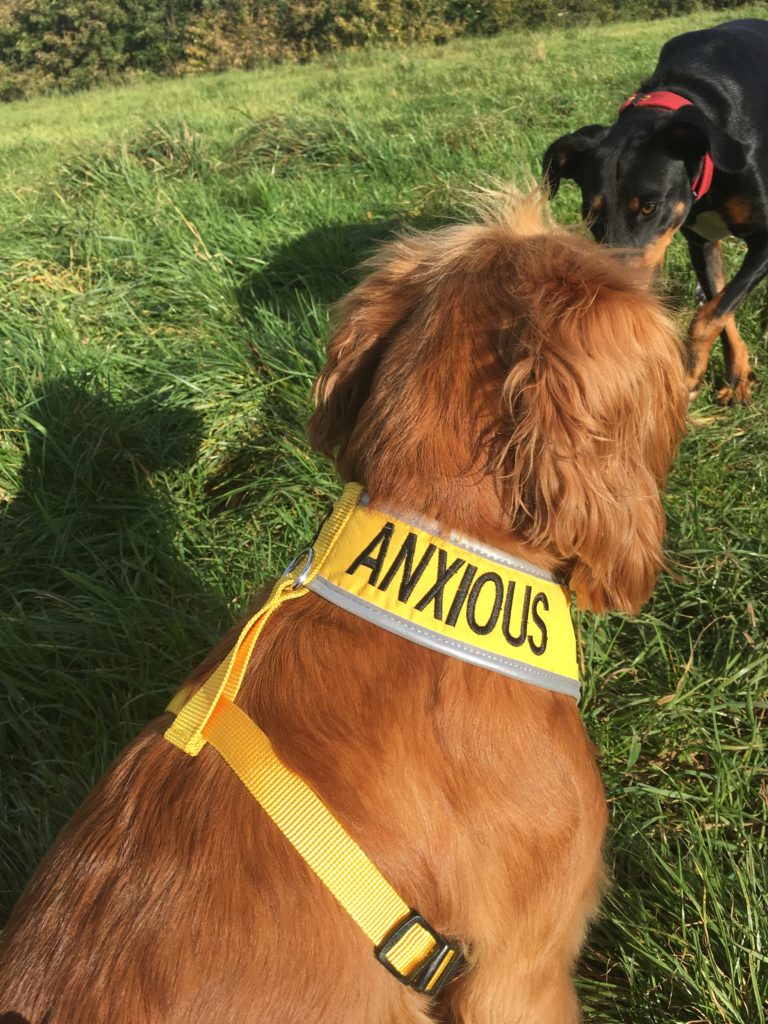
Do you think animals have emotions? Let me know in the comments below.
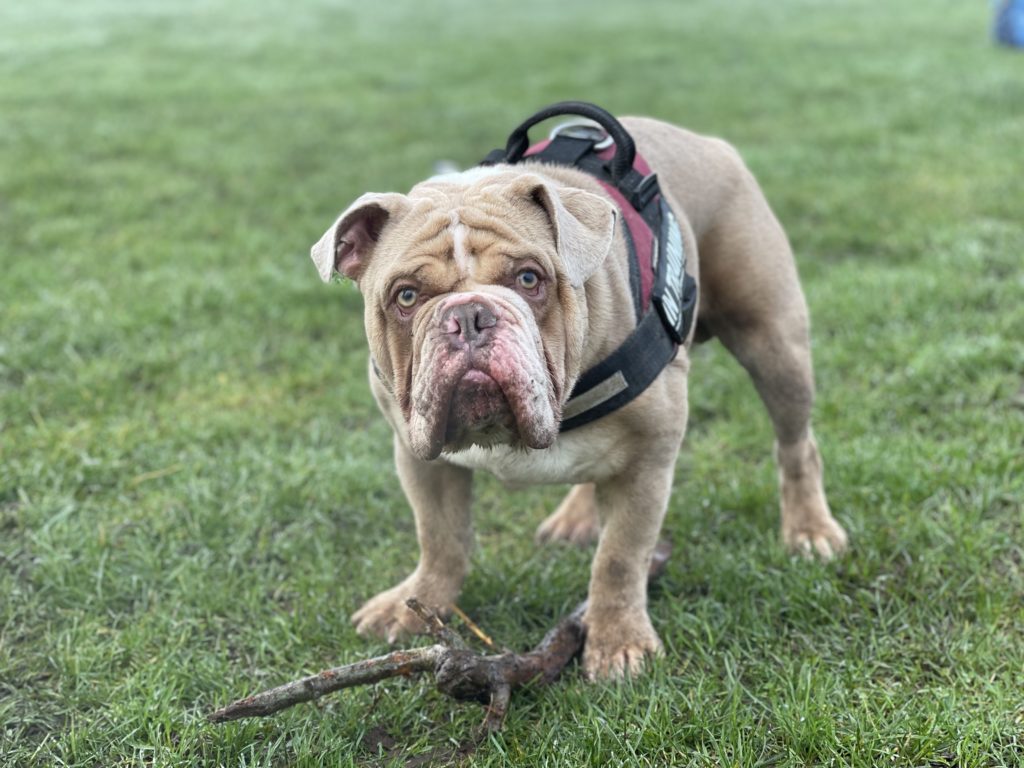
Fear and Anxiety in Dogs
Emotions are a biological phenomenon that animals experience and that they play a vital role in their survival.
Fear and anxiety are emotions that promote survival in animals, and anxiety can be adaptive or pathological.
The feeling and expression of anxiety are firmly routed in physiological processes within the body. The nervous and endocrine systems play a vital role in stress systems. Genetic predisposition and environmental factors contribute to fear and anxiety-related disorders.
‘Coping style’ refers to individual differences in stress response and is an aspect of individual animal personalities.
Fear and anxiety responses begin with perceiving a stimulus as a threat.
Some dogs need space
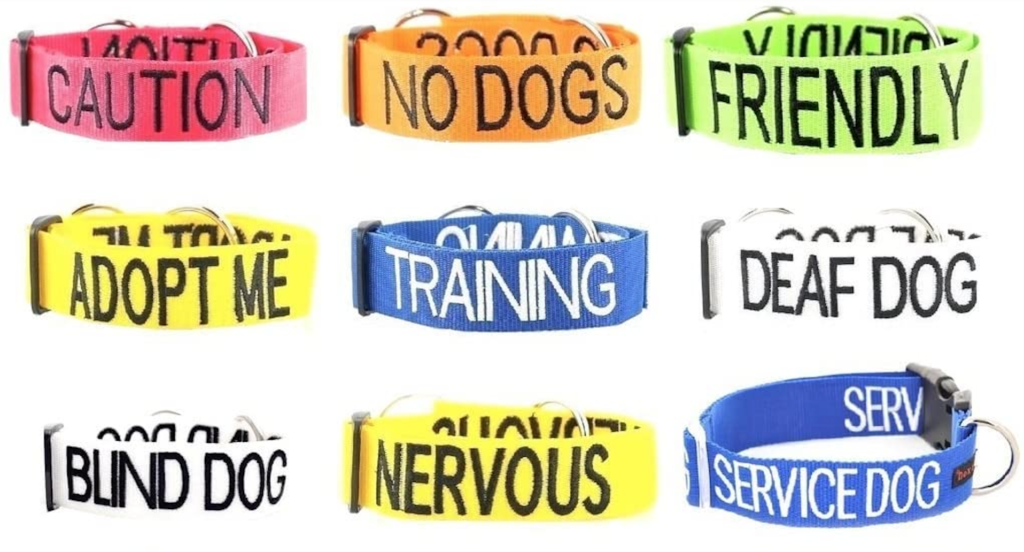
Whether you have a dog with anxiety, a new rescue, a timid puppy, sometimes dogs just need space. There is a very popular colour coding for dog accessories that help owners tell people their dog needs space.
Check out Yellow Dog UK or My Anxious Dog for those who don’t know about this.
This colour coding system can be a handy tool while training or even help manage particularly anxious dogs. After all, we have all been there when someone’s friendly off-lead dog has come bounding up to us.
What are my two pet hates?
An off lead dog comes running over to your anxious dog.
The other dog owner shouts: ‘It’s OK! My dog is friendly!’
Or
The other dog owner shouts: ‘It’s OK! My dog needs telling off!’
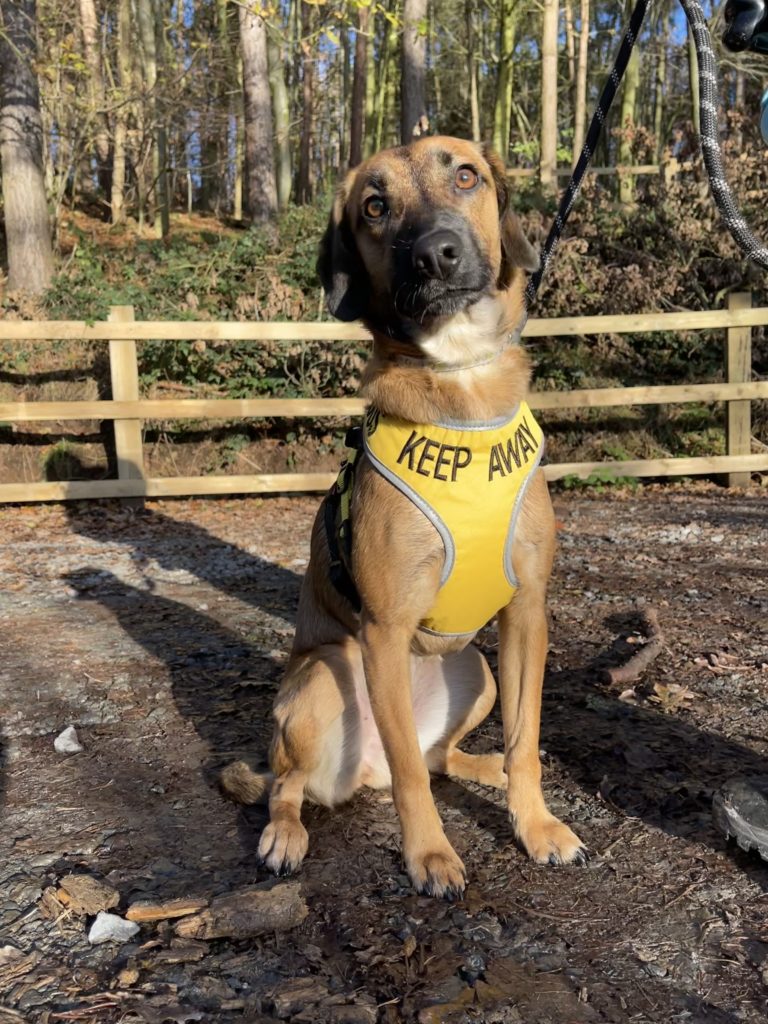
This sort of person is everywhere, and you must understand that they mean well. Their dog is over-friendly, and they don’t even think twice or realise that other dogs could be of a nervous or anxious disposition.
However irritating it can be, you can’t control other people, and you have to think of strategies to help these people understand to keep their distance. Using an accessory that says ‘nervous’, anxious or ‘I need space’ can help.
Another benefit these colour-coded accessories have is that they can be a successful conversation starter. Another dog owner may stop to ask some questions about your dog. For example, this can be useful if their dog is on a lead, and you see that your anxious dog may feel comfortable greeting them. Ask the owner if it is OK to let them meet and allow your dog to say hello if they want to. Remember, never force your anxious dog or pull it towards something it is afraid of.
Can you train a dog to help with anxiety?
Yes. Depending on how severe the anxiety is, your vet may need to prescribe some medication, or an over-the-counter product can help bring the anxiety down. We would always recommend these products alongside a behaviour modification plan from a behaviourist. It is rare that anxiety cannot at least be improved if not made better entirely with professional help.
How do I get my dog to stop being anxious?
There are many different types of anxiety, so firstly, we would recommend speaking to your vet. They will typically give your dog a good check over to make sure there isn’t anything else untoward going on, and then they can discuss your options.
How do you train an anxious dog to walk?
The most important thing to do when you have an anxious dog is to understand its ‘threshold’ and triggers’. Each dog will have individual issues, so if you are not sure, definitely seek the help of a professional to tackle the problem correctly.
Once you understand the triggers and threshold, you can take your dog for a walk and avoid stressing your dog out.
In behaviour modification, it is equally important to manage triggers and thresholds and change the dog’s emotional response.
Understanding, Preventing, and Treating Dog Anxiety
Having an anxious dog can be highly complex, and therefore we would always recommend seeking the help of a professional. If you don’t know what you are doing, you could potentially make your dog worse and even more anxious or stressed.
Once you have a more formal diagnosis, you will be able to understand, prevent and treat your dog’s anxiety.
8 Tips for Helping an Anxious Dog
Get professional help. Anxiety is complex, and therefore your need to know exactly what kind of anxiety it is.
Understand your dogs’ threshold’.
Take your time. Anxiety is not ‘cured’ quickly. Sometimes this can take months or even years.
Try over the counter anti-anxiety products straight away. These can sometimes give your dog some relief reasonably quickly.
Speak to your vet. It is essential to have your dog checked by a vet if there is something medical going on, but also, if the anxiety is very severe, they will prescribe medication straight away.
Go at the individual dog’s pace. Confidence is not something that is forced and rushed.
Do not use a technique called ‘flooding’. This technique is where you expose the dog to a large amount of stimulus for a sustained period so that it ‘habituates’. This is an outdated technique, stressful for the dog, and more often than not, the results are not long-lasting. You end up with regression and don’t resolve the issue.
Use training aid such as a yellow harness or lead with ‘anxious’ or ‘nervous’. This can help other dog walkers when you are out walking your dog. They may put their dog back on the lead or give you a bit of space.
The #1 Mistake With Anxious Dogs
Not seeking professional help. Always consult your vet for a physical examination and advice on who to contact for behavioural support.
Managing Your Dog’s Separation Anxiety
One of the most important things to do with a dog with separation anxiety is never to leave it alone when starting a behaviour modification programme.
This can mean that you enlist the help of a house sitter, friend, family member or neighbour to stay with the dog.
Every time you leave the dog alone, you remind them how stressful it is to be alone. Doing this would be counterproductive in the training progress. It may seem a little overwhelming to organise this, but it is essential in the early stages of the desensitisation process.
How to help a dog with separation anxiety
Firstly, you must seek the help of a professional. Without knowing what to do or trying methods that are not suited to your dog, you may actually make the problem worse.
The sooner you get help, the better, as the longer your dog has practised the behaviour, the more work it will take to improve.
How to help separation anxiety in dogs
As soon as you realise your dog may be suffering from separation-related issues, it is essential that you get your dog checked over by your vet. From there, you can be sure there is nothing medical untoward; discuss how severe the separation-related issue is and what your next steps are.
Your vet may prescribe some anti-anxiety medication straight away if your dog is severely anxious to relieve your dog of acute distress immediately. They will then refer you to a behaviourist who will help you through a behaviour modification programme.
Can you pass anxiety onto your dog?
In sort – Yes. Although you can’t physically ‘give’ anxiety to your dog, you can certainly affect a change in the dog’s emotional state. Dogs are incredibly tuned into recognising changes in our emotions and therefore if you become anxious, your dog will pick up on this.
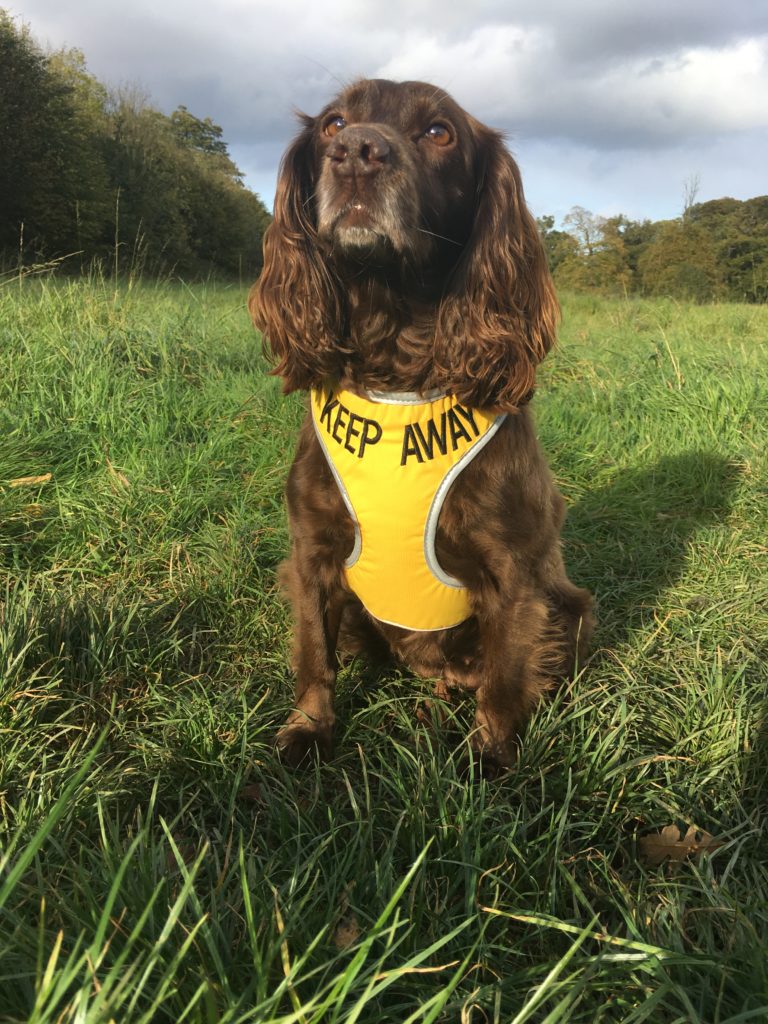
Disclaimer: The information provided in this blog is for informational purposes only. Read our full Disclaimer.

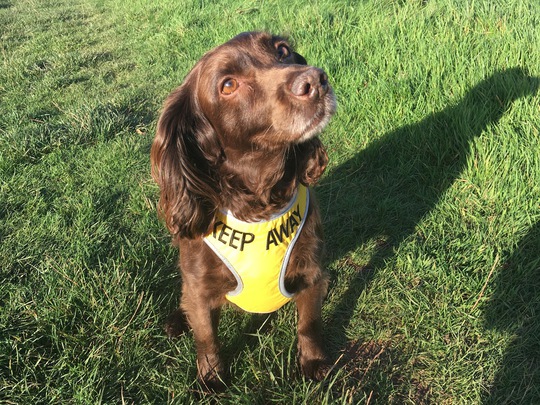






Comments are closed